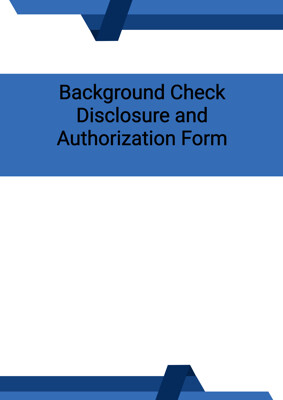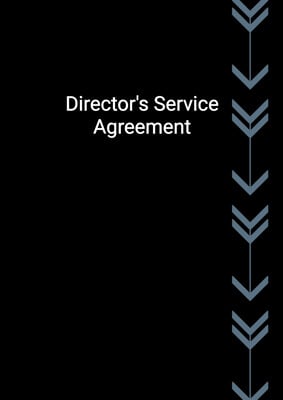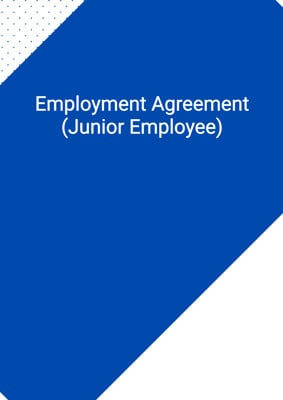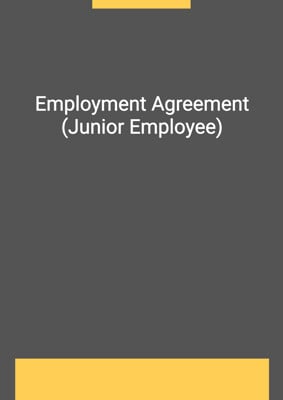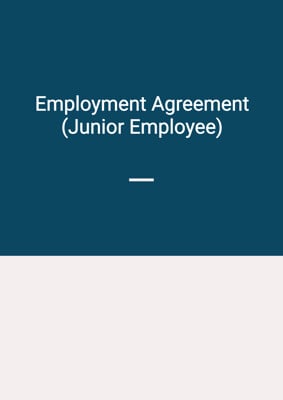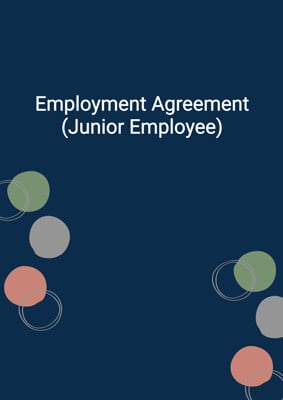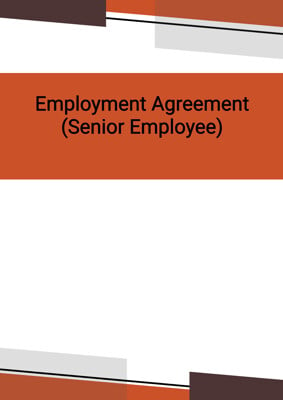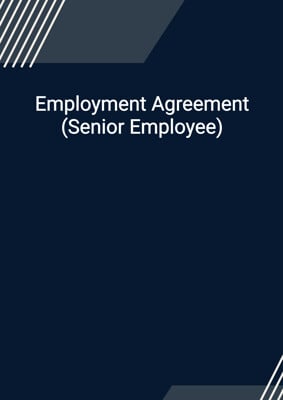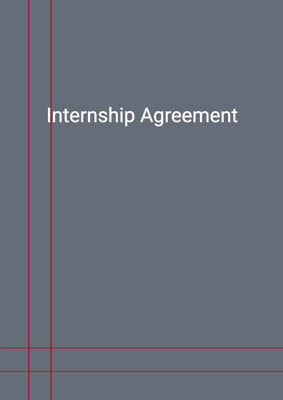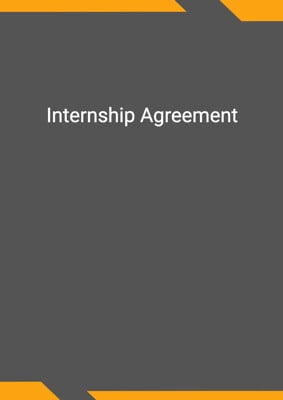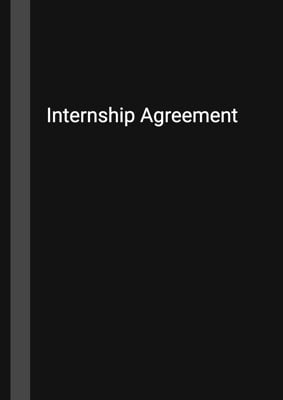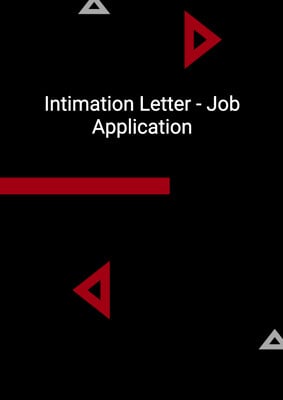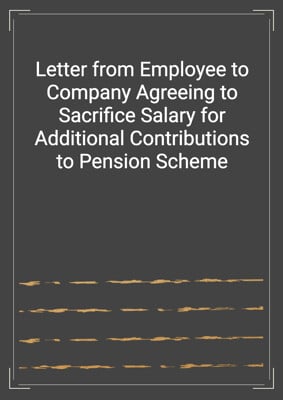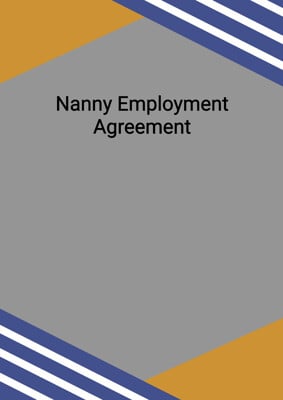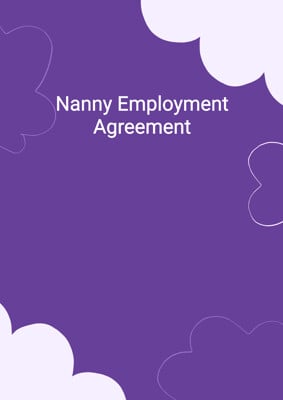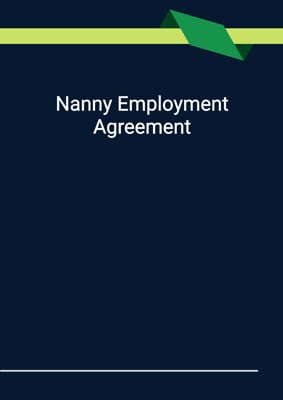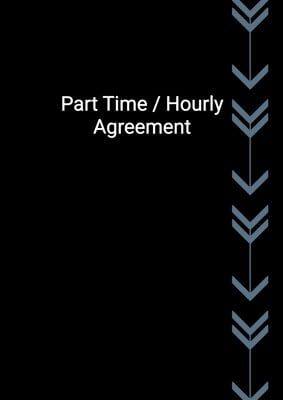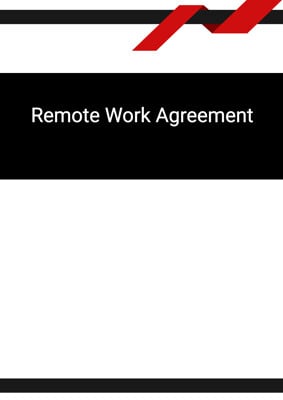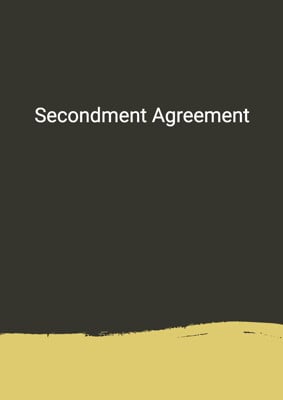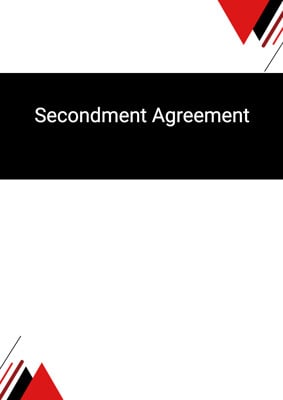
Employment Agreement for Junior/Mid Level Staff (simple form)
Employer favoured with Probation Period
This comprehensive Employment Agreement outlines key terms, benefits, and restrictions for junior/mid-level employees, favouring the employer. Protect your business and establish clear expectations with this legally-binding document.
How to Tailor the Document for Your Need?
01
Create Document
Fill in the details of the parties. You can click the "Fill with Member’s Information" button to complete it with information saved to your account.
02
Fill Information
Please fill in any additional information by following the step-by-step guide on the left hand side of the preview document and click the "Next" button.
03
Get Document
When you are done, click the "Get Document" button and you can download the document in Word or PDF format.
04
Review Document
Please get all parties to review the document carefully and make any final modifications to ensure that the details are correct before signing the document.
Document Preview
Document Description
The 'Employment Agreement for Junior/Mid Level Staff (simple form)' is a legal document that outlines the terms and conditions of employment between an employer and an employee. This agreement is important as it establishes the rights and responsibilities of both parties, ensuring a clear understanding of the employment relationship.
The document begins with a brief introduction, stating that it is an employment agreement between the employer and the employee. It includes the names of both parties and their respective roles. The agreement also specifies that it is subject to the terms and conditions outlined below.
The document is divided into several sections, each addressing a specific aspect of the employment relationship. The first section discusses the position of the employee within the company, including the department in which they will work. It provides a detailed description of the employee's duties, outlining the specific tasks and responsibilities they are expected to fulfill.
The next section focuses on the place of work, stating the primary location where the employee will be based. It also mentions that the agreement will remain in effect until either party terminates it. Additionally, it introduces the concept of a probation period, specifying its duration from the employment commencement date.
The working hours section outlines the expected daily working hours, from Monday to Friday, including a lunch break. It also mentions that the employee may be required to work additional hours when necessary. However, it clarifies that the employee is not obligated to work on statutory holidays unless the workload demands it.
The remuneration section states the basic monthly salary that the employee will receive. If applicable, it includes information about overtime compensation. It also mentions the entitlement to paid annual leave, maternity/paternity benefits, and enrollment in a provident fund. The document further specifies any other benefits that the employee will receive.
The discipline section emphasizes the employee's agreement to abide by all the rules and regulations of the employer. It highlights the consequences of breaching the employment agreement, including termination.
The confidentiality section addresses the employee's obligation to keep the employer's business secrets confidential. It defines what constitutes business secrets and prohibits the unauthorized copying or removal of such information.
The patent and inventions section states that any inventions or patents created by the employee during their employment will belong to the employer. It also mentions the employee's agreement to sign any necessary documents to transfer the rights to the employer.
The non-solicitation section prohibits the employee from soliciting or approaching the employer's customers, clients, or suppliers after the termination of the employment agreement. It highlights the potential legal consequences for breaching this provision.
The disputes section includes a jurisdiction clause, stating that both parties understand and agree to abide by the provisions outlined in the agreement. This section ensures that any disputes arising from the employment relationship will be resolved according to the specified jurisdiction.
In conclusion, the 'Employment Agreement for Junior/Mid Level Staff (simple form)' is a comprehensive document that covers various aspects of the employment relationship. It establishes the rights and responsibilities of both parties, ensuring a clear understanding of the terms and conditions of employment.
How to use this document?
1. Enter the Contractor's and Customer's information in the agreement, including their principal place of business. This ensures that both parties are clearly identified.
2. Clearly specify the agreed price and completion date of the work to be carried out by the Contractor. This will ensure that both parties are aware of the expectations and deadlines.
3. Clearly describe the type(s) of services to be provided by the Contractor. This ensures that both parties are aware of the scope of work and can avoid any misunderstandings.
4. Both parties should agree on the length of warranty and time of payment after the completion of the work. This ensures that both parties are aware of the payment terms and the length of the warranty.
5. If the work is not completed by the completion date, specify the amount of damages per week that the Customer is entitled to. This ensures that both parties are aware of the consequences of non-completion.
6. The 'Employment Agreement for Junior/Mid Level Staff (simple form)' is a legal document that outlines the terms and conditions of employment between an employer and an employee. It is important to carefully review the entire document and ensure that all sections are understood.
7. Enter the names of the employer and employee, as well as their respective roles, in the designated fields. This will establish the identities of both parties.
8. Pay attention to the section regarding the employee's position and duties. It is crucial to accurately describe the specific tasks and responsibilities that the employee will be expected to fulfill.
9. Specify the primary place of work, ensuring that the location is clearly stated. This will provide clarity on where the employee will be based.
10. Take note of the probation period mentioned in the document. Understand its duration and implications for both parties.
11. Familiarize yourself with the working hours section, including the daily working hours and lunch break. Be aware of any expectations for additional work when the workload demands it.
12. Understand the remuneration section, including the basic monthly salary and any applicable overtime compensation. Take note of the entitlement to paid annual leave, maternity/paternity benefits, and enrollment in a provident fund.
13. Consider any other benefits mentioned in the document and ensure a clear understanding of what they entail.
14. Acknowledge the importance of abiding by the rules and regulations of the employer, as stated in the discipline section.
15. Be aware of the termination provisions outlined in the document, including the circumstances under which the agreement may be terminated.
16. Understand the confidentiality obligations stated in the document, including the prohibition on disclosing the employer's business secrets.
17. Take note of the provisions regarding patent and inventions, including the transfer of rights to the employer.
18. Understand the non-solicitation clause and the potential consequences for breaching it.
19. Familiarize yourself with the jurisdiction clause, which specifies the applicable jurisdiction for resolving disputes.
20. Seek legal advice if needed to ensure a thorough understanding of the document and its implications for both parties.
Not the right document?
Don’t worry, we have thousands of documents for you to choose from:
